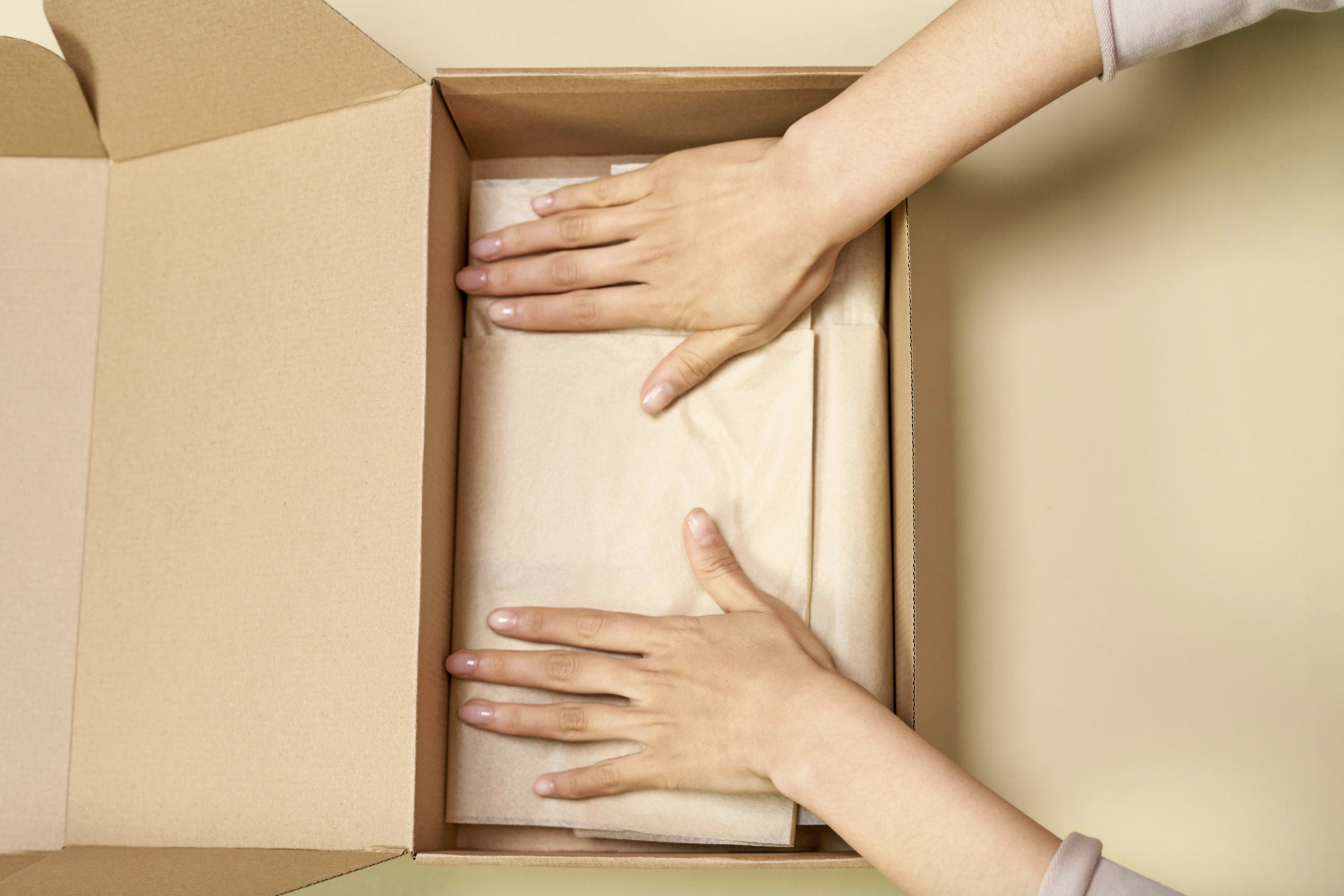You spend real money to win a click. Then more to fulfil it. And right when the parcel lands—arguably the most intimate, high-attention moment in your customer’s journey—you let the story fade to brown cardboard. That’s a missed channel. A fixable one. If you’re shipping in a custom mailer box, you already own a slice of media most brands ignore: a tactile, branded stage with a captive audience and zero algorithm to fight.
Think about it this way: your checkout flow is optimized to death. Your ads are tuned daily. But the experience that turns a single order into a habit—unboxing—is often left to procurement and chance. Treat unboxing like a product. Give it an owner. Put it on your P&L. When you do, two things happen: customers understand how to use and love what they bought, and you create low-cost opportunities to sell again (without feeling salesy).

Why Unboxing Is More Than Pretty Tissue
A great unboxing solves four business problems simultaneously:
- Confidence — Clear instructions reduce buyer’s remorse and returns.
- Time-to-value — The faster they start using the product, the stickier they become.
- Shareability — Memorable presentation turns customers into promoters without a sponsorship fee.
- Next action — You stage a single, obvious “what now?” that advances the relationship.
Here’s the litmus test: if a first-time buyer opens your parcel and can’t answer “What should I do in the next 60 seconds?”, your unboxing is unfinished.
Map the Unboxing Funnel (Yes, It’s a Funnel)
Treat the parcel like a page:
- Hero — The opening impression. This is where brand cues, a short welcome line, and visual calm matter.
- Orientation — A simple card that says “Start here.” No wall of text. Just steps 1–3 with a QR to deeper content.
- Activation — A micro-win in under a minute: assemble, plug in, try a sample, scan for a setup video.
- Expansion — One relevant cross-sell or refill path (not a catalogue).
- Community — A light prompt to share, review, or join a space where owners compare notes.
When you design the flow in this order, you reduce friction before you ask for anything. That sequencing alone can lift review volume, UGC, and repeat purchases.
Why a custom mailer box pays for itself
A custom mailer box doesn’t just look good; it standardises protection, insert placement, and the “open sequence,” which means fewer damages, fewer returns, and a brand experience you can actually repeat at scale. Consistency converts. It also lets your fulfillment team pack faster because everything has a clear home—less tape improvisation, fewer packer decisions, more orders out the door with the exact same reveal.
Build Your Revenue Stack Inside the Box
Think of the interior as shelf space. You have limited real estate, so be intentional.
- Onboarding card (one side, three steps).
Goal: get them to “first success” immediately. Add a QR that leads to a 60–90 second video. Keep it short; the box is the trailer, not the movie. - Single cross-sell, not eight.
Choose the one add-on that improves their day-one outcome. If they bought a starter kit, the logical next step is a refill, a case, or a protective accessory. Give a small, time-bound incentive—think “$5 towards your first refill within 7 days.” - Referral prompt that’s actually persuasive.
Swap “share with friends” for a concrete offer: “Give $10, get $10.” Add a unique QR or short code so you can attribute revenue to packaging. - Sample seeding.
If you sell a range, include a tiny sample of a complementary product. This isn’t freebie theatre; it’s discovery. Discovery drives basket expansion. - The review flywheel.
Ask for reviews only after you’ve made success obvious. A line like “If we earned 5 stars, tell others. If we didn’t, tell us first.” routes unhappy customers to support and keeps public sentiment high.
Design for Ops: Beauty That Ships Fast
Unboxing fails when brand and operations design in isolation. Fix that:
- Pack-time standardisation. Use printed “shadow” zones or a simple diagram inside the lid that shows where each element sits.
- Insert engineering. Corrugate or pulp inserts that lock items in place cut damage and speed packing—no poly void fill confetti.
- SKU simplification. If you have five variants of the same kit, use a universal tray and a small variable label. You keep the same box and swap the label.
- 3PL collaboration. Get your 3PL in the room early. They will tell you where returns happen and which box sizes bleed margin.
If ops can pack it blindfolded, you’re ready.
The Numbers: Put Unboxing on the P&L
Here’s a simple way to justify investment without hand-waving.
- Inputs (cost side):
- Unit packaging cost (box + inserts + print)
- Added pick/pack seconds → labour cost
- Sample cost (if used)
- Incentive redemptions
- Outputs (revenue/profit side):
- Return-rate delta (before vs. after)
- Damage-rate delta
- Review volume and average rating lift
- Repeat purchase rate at 30/60/90 days
- Referral revenue attributed to packaging codes/QRs
- Average order value on the second purchase
Run a 60-day cohort analysis. If repeat rate lifts even a couple of points and returns fall modestly, the packaging upgrade often pays back faster than top-of-funnel spend.

Make It Sustainable and Honest
Sustainability signals matter to customers—and to finance.
- Right-size the box. Air costs money. Package-to-product ratio is a line item, not a vibe.
- Mono-material where possible. The easier it is to recycle, the less friction and guilt.
- Printed clarity. A tiny panel explaining disposal (“box: curbside, insert: curbside”) saves headaches and builds trust.
- Durability first. Sustainable does not mean flimsy. Breakage is the worst waste of all.
You’re not preaching here. You’re reducing cost and friction while earning goodwill.
What to Test in a 4-Week Unboxing Sprint
Ship learning, not opinions.
Week 1 — Baseline & build
- Photograph and time your current pack process.
- Record your damage/return reasons and repeat rate baseline.
- Draft two interior layouts (A/B) with different sequences.
Week 2 — Pilot run
- Send 200 orders on layout A and 200 on layout B.
- Instrument each with unique QR/URL parameters.
- Add a follow-up email triggered on delivery that mirrors the insert CTA.
Week 3 — Read and refine
- Compare completion rates on the onboarding flow.
- Track referral code redemptions and support tickets.
- Talk to the packers. If your team hates the new insert, it won’t scale.
Week 4 — Rollout + iterate
- Roll out the winner to 80% of orders; keep 20% as control for one more week.
- Document the SOP: photos, steps, pack-time target, QC checklist.
Do this quarterly. Packaging is not a one-and-done project.
B2B, Wholesale, and Enterprise: Don’t Skip Delight
If you sell into businesses, the bar is different—but the opportunity is the same.
- Trade buyers are people. A clear, organised unboxing reduces the time they spend setting up, which means fewer internal complaints and faster reorders.
- Documentation matters. A clean, tabbed quick-start guide beats a link to a PDF maze.
- Asset kit inside. Include a short “brand kit” card with approved logos and a link to photos—they’ll use the right images on their site and save your team back-and-forth.
- Service hook. Add a direct line or QR to a priority support form for account holders. Speed is loyalty.
Enterprise buyers notice when you respect their time. That turns into larger POs.
Mistakes That Kill Unboxing ROI
Avoid these and you’re already ahead:
- Stuffing the box with ads. One CTA wins. Six CTAs confuse.
- Tiny text, long text, or both. If it can’t be scanned in 10 seconds, it won’t be read.
- Asking before giving. Guide to success first; request reviews after.
- Random samples. If the sample doesn’t connect to the purchased item, it’s clutter.
- Ignoring return friction. Make returns simple and rare by solving problems before they happen: fit, protection, instructions.
Bringing It All Together
You don’t need glossier paper or five new SKUs to monetise unboxing. You need intent. A point of view about what should happen in the first minute after the box opens—and the discipline to design for it. When you treat the parcel as owned media, orchestrate a simple sequence, and measure like a marketer, you turn a cost centre into a revenue channel. Start small, test fast, and let the data pick the prettiest box.




